4 Best Pull Up Variations For Back Musculature (with Pictures!)
Though it was hotly debated in the past, EMG studies have firmly established that pull-ups are one of the best exercises for recruiting the muscles of the back.
But this raises even more questions; which variation of the pull-up will result in greater back muscle growth?
To put it short, the best type of pull-up for the back are those that will involve an overhand (pronated) grip, as well as those involving a wider hand distance. Both characteristics reduce the involvement of the biceps brachii, meaning that it is the muscles of the back that will bear more of the body’s own weight.
What Back Muscles do Pull-Ups Work?
While it is common knowledge that pull-ups train the back, not all individuals are aware of the numerous muscles that make up the back of the torso.
From a more specific viewpoint, pull-ups primarily target the latissimus dorsi, rhomboids, teres major and trapezius muscles - while also utilizing muscles located elsewhere in the body, such as the posterior deltoid head of the shoulders and the biceps brachii of the upper arms.
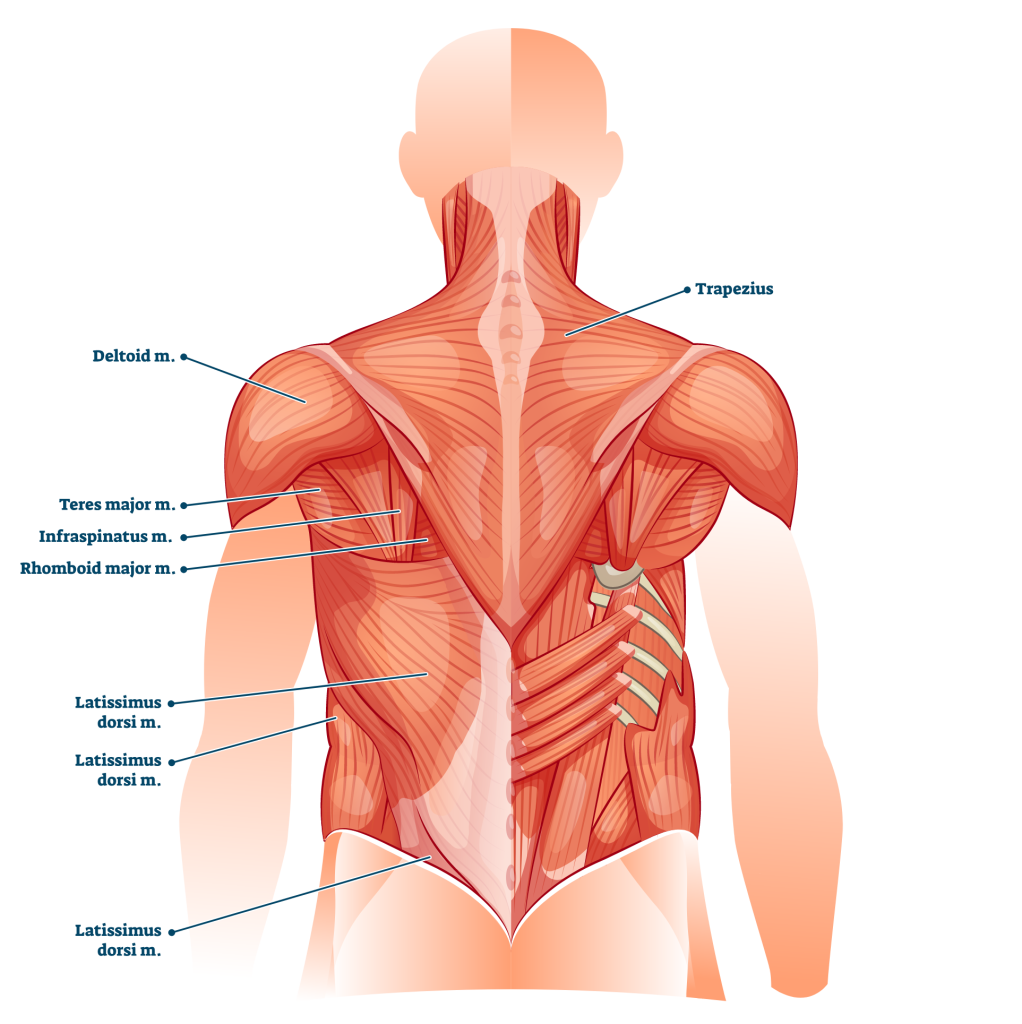
The actual level of involvement of each muscle group will vary between pull-up variations, and as such is an important factor that must be considered when deciding the exercise selection of a training program.
What Pull-Up Variation is Best for Back Growth?
As was stated previously in this article, pull-up variations that focus more on the back will involve an overhand grip and a wider hand distance along the bar.
While this doesn’t quite narrow it down due to how many variations involve such a stance, it does exclude certain other exercises like the neutral grip pull-up or narrow grip pull-up - as well as the many other variations.
1. Overhand Grip Conventional Pull-Ups
Or what is otherwise known as simply “pull-ups” - the regular pull-up is one of the best possible choices for working the muscles of the back.
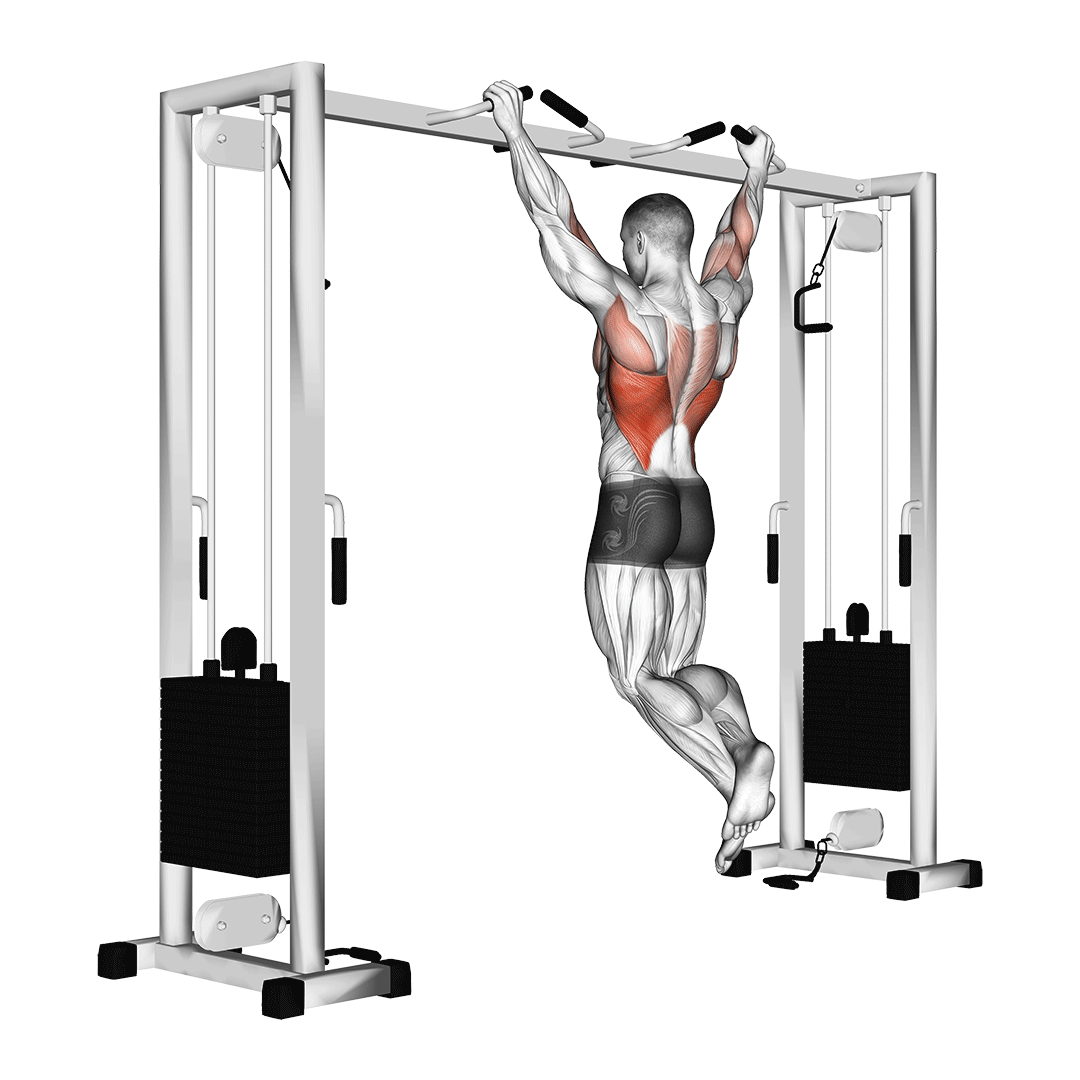
Much like all other pull-up variations, conventional pull-ups are a multi-joint compound exercise primarily performed with body weight alone, often for moderate volume sets of 6-12 repetitions each.
Muscles Worked by Overhand Conventional Grip Pull Ups
Conventional pull-ups train the biceps, lats, rhomboids, trapezius, teres major and posterior deltoid head to a highly effective degree, but focus more on the back, rather than the arms or shoulders.
Benefits of Overhand Conventional Grip Pull Ups
Conventional pull-ups have the benefit of being one of the easiest pull-up variations possible, surpassed only by chin-ups and assisted pull-ups. They are one of the lowest impact back exercises available, and are relatively easy to learn for novice exercisers.
Furthermore, conventional pull-ups provide an excellent balance between working the muscles of the back but still training the biceps - so much so that they have become the standard among calisthenic athletes or functional fitness enthusiasts.
How-to:
Setting the hands slightly wider than shoulder-width apart along a pull-up bar, the exerciser will contract their core to prevent swinging as they pull through the lats and elbows, drawing their chest upwards and towards the pull-up bar.
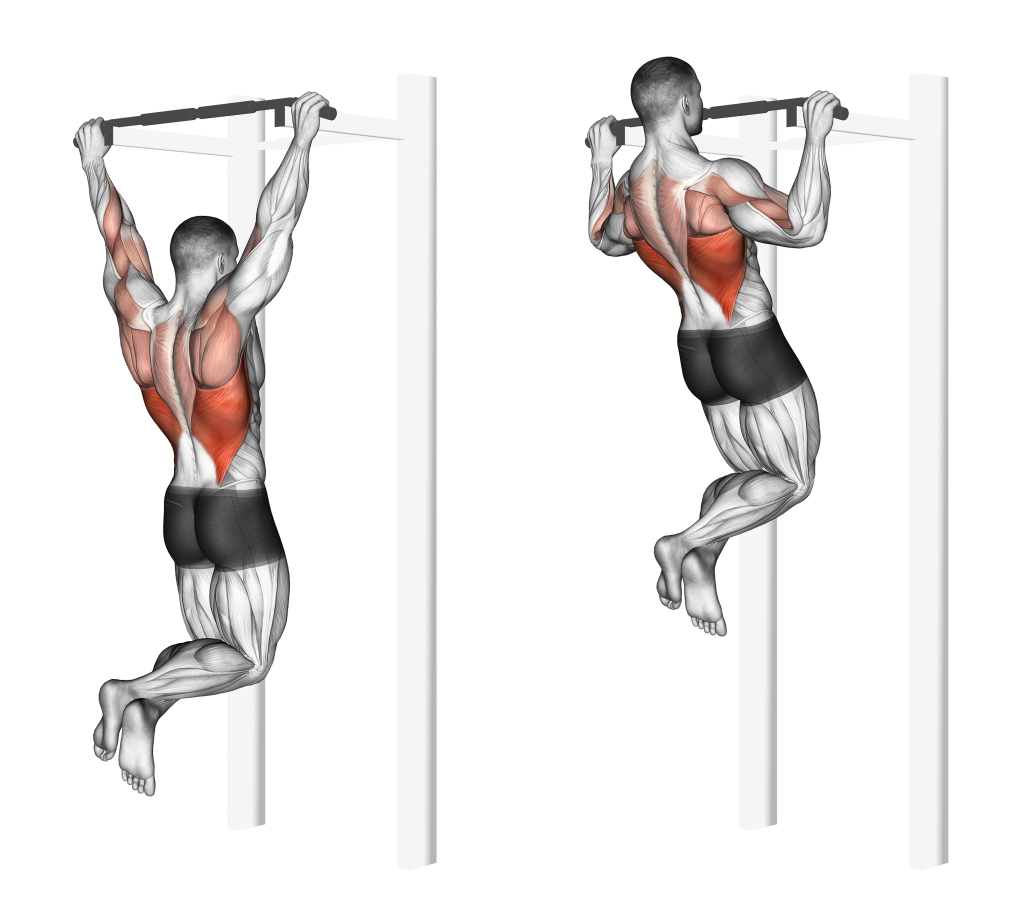
Once the bar is below their head, they will then reverse the motion - slowly lowering themselves until the arms have returned to a state of full extension, thereby completing the repetition.
2. Wide Grip Pull-Ups
Just as the name implies, wide grip pull-ups are simply conventional pull-ups performed with the exerciser’s hands set wider than they would be in a regular pull-up repetition.
This wider hand distance equates to the muscles of the arms being utilized to a far lesser degree, forcing back muscles like the lats and teres major to make up for the loss in force.
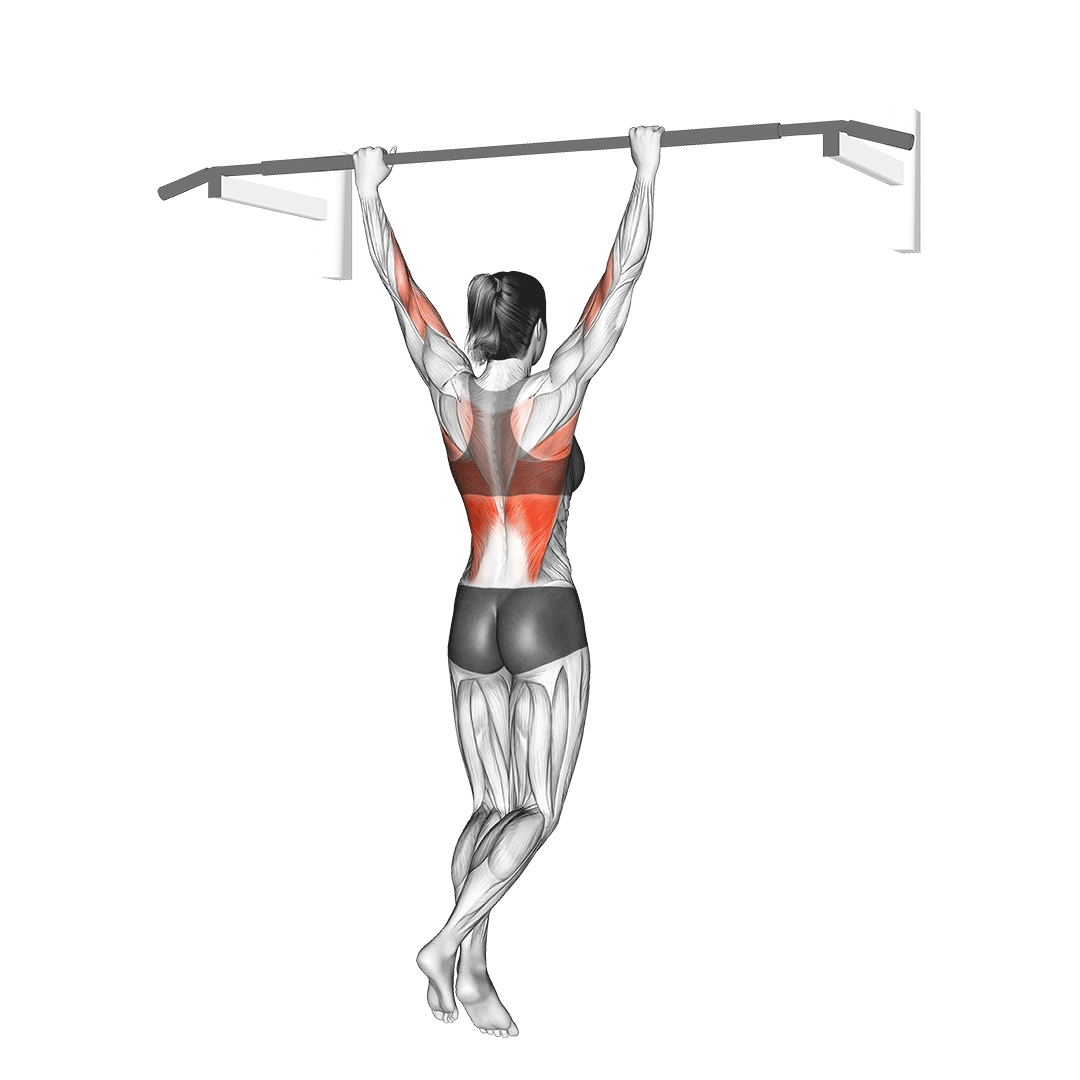
Most exercisers will find that wide grip pull-ups are more difficult to perform than conventional pull-ups, and as such are often programmed for lower volume sets as a result.
As a side note, wide grip pull-ups are also known for placing greater strain on the joint of the shoulder, and additional precaution should be taken to avoid injury.
Muscles Worked by Wide Grip Pull Ups
Wide grip pull-ups train much the same muscles as conventional pull-ups, only without as much biceps brachii involvement. This means that the muscles of the lats, traps, teres major, rhomboids and posterior deltoid head all remain intensely recruited by the exercise.
Benefits of Wide Grip Pull Ups
Wide grip pull-ups are an excellent way of upping the intensity of regular pull-ups without using additional equipment.
Apart from the greater intensity, wide grip pull-ups are also suitable for exercisers that find conventional pull-ups to involve their biceps too greatly - or those that have trouble preventing the lower body from swinging during the exercise.
How-to:
Wide grip pull-ups are performed in much the same way as conventional pull-ups, only with the hands set wider apart.
To do so, the exerciser should experiment with increasing the distance between their hands, starting from a conventional hand width.
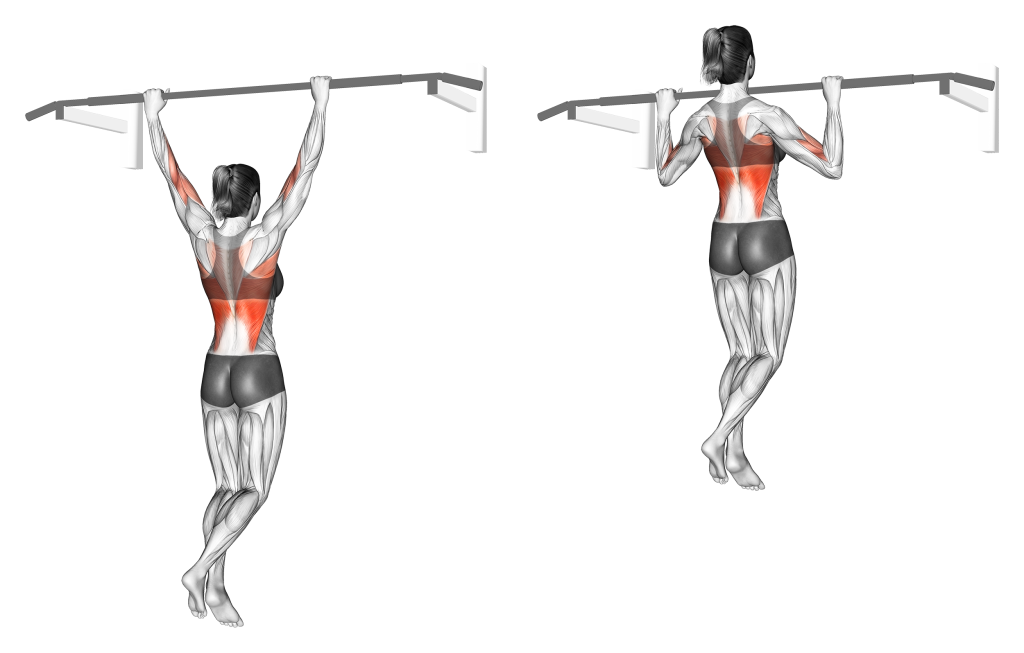
Once they have found the ideal balance between hand distance and advantageous positioning, they may then proceed with the wide grip pull-up by contracting the muscles of the back and pulling the chest over the bar before reversing the motion in a slow and controlled manner.
3. Arched Back Pull-Ups
Seen as a progression from regular pull-ups by calisthenic athletes, the arched back pull-up is mechanically similar to a conventional one, only with the back drawn as far away from the bar as possible.
This distance involves significantly greater back muscle recruitment, but may also be too difficult for inexperienced exercisers.
Like other pull-up variations, the arched back pull-up is a multi-joint compound exercise performed for low-to-moderate volume sets, and often with only the exerciser’s own body weight for resistance.
Muscles Worked by Arched Back Pull Ups
The arched back pull-up trains the same muscles as any other pull-up, only with greater recruitment of muscles like the trapezius, posterior deltoid head and rhomboids.
While the lats and biceps still play a role in the exercise, they are not worked to the same extent as the aforementioned muscle groups.
Benefits of Arched Back Pull Ups
Arched back pull-ups excel at placing a far greater amount of focus on the muscles of the mid-back, recruiting muscle groups that are too often forgotten in calisthenic training programs.
In addition, they are also an excellent progression to more complex body weight exercises like the lever or the muscle up.
How-to:
Setting the hands at shoulder-width apart (closer than conventional width), the exerciser will focus on drawing their shoulder blades together and downwards, bending at the elbows so as to draw the torso upwards while simultaneously arching the upper back.
If performed correctly, the exerciser should be somewhat further away from the bar at the apex of the repetition than they would be during a regular pull-up.
From this point, they may then slowly lower themselves back to the dead hang position, thereby completing the repetition.
4. Weighted Conventional Pull-Ups
For exercisers without the technique or desire to perform more advanced calisthenic variations, one possible alternative is to add further resistance to a conventional pull-up through the use of weights.

Most often, this will take the form of a dip belt and set of weight plates, though at-home lifters have been known to hold a dumbbell between their feet as an alternative.
Lifters choosing to perform weighted pull-ups should keep in mind that they are otherwise mechanically identical to conventional pull-ups, and possess much the same movement pattern and muscular recruitment set.
Muscles Worked by Weighted Conventional Pull-Ups
Just as is the case with unweighted pull-ups, weighted pull-ups will train the muscles of the latissimus dorsi, trapezius, rhomboids, teres major, biceps brachii and the posterior head of the deltoid.
The sole difference in muscular recruitment would be a greater usage of the core musculature in an isometric capacity, as the exerciser will need to compensate for the additional weight below their waist.
Benefits of Weighted Conventional Pull-Ups
Weighted pull-ups are a simple and highly effective way of maintaining progressive overload once conventional pull-ups are no longer feasible.
They can allow individuals without access to barbells or dumbbells to further train their back without performing high volume sets of the conventional pull-up.
How-to:
Weighted pull-ups are performed in the same way unweighted pull-ups are; hands set wider than shoulder-width apart along the bar, the exerciser contracts their lats and pulls their elbows behind the torso, drawing their chest to the pull-up bar as they do so.
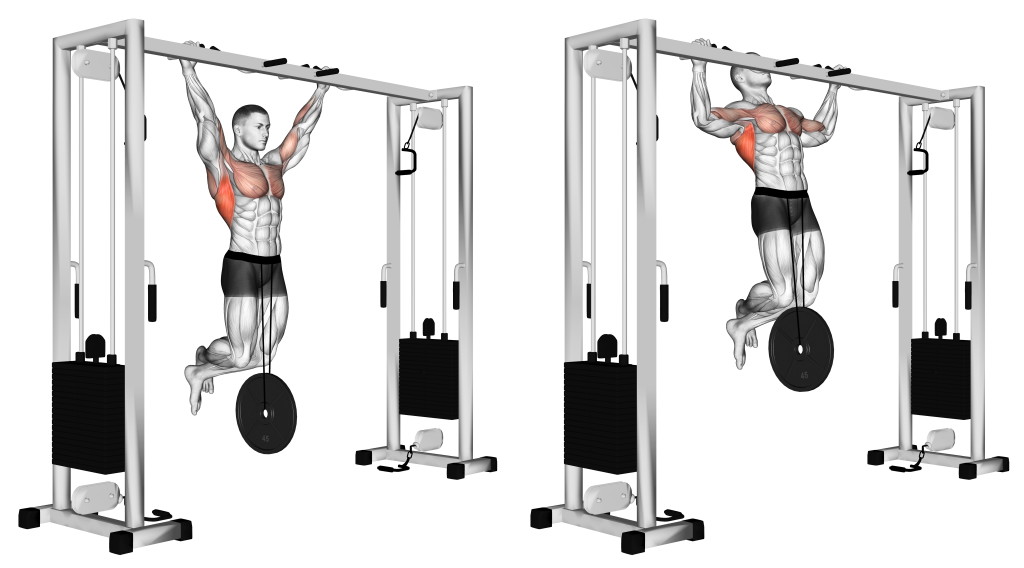
Once the pull-up bar is beneath their head, they may then reverse the motion in a slow and controlled manner, thereby completing the repetition.
Frequently Asked Questions (FAQ)
What Pull-Up Form is Best for Lats?
The best way to target the latissimus dorsi with pull-ups is to perform the exercise with an overhand grip, and to set the hands wider than shoulder-width apart at the least.
This ensures that the lats aren’t overshadowed by muscles like the biceps or deltoids, of which are recruited to a greater level by an underhand or close grip.
Are Pull-Ups Enough to Build Lats?
In most cases - yes, pull-ups are enough to train the lats.
Keep in mind that there are other muscle groups also present in the back, and that it is important to ensure all muscles are trained equally so as to avoid muscular asymmetry.
Do Pull-Ups Make Your Back Bigger?
Yes - specifically, pull-ups are great for making the back wider in appearance. This is on account of the lat-focused recruitment pattern that most pull-up variations share, causing exercisers to develop a wider upper and middle back.
Final Thoughts
As effective as the exercises listed here can be, keep in mind that exercise selection is only a portion of what is needed to build a muscular back.
Ensure that proper programming and form are followed, and that diet and recovery are optimized as much as possible.
References
1. Ronai P, Scibek E.. The Pull-up. Strength Cond J. 2014;36(3):88–90.
2. Snarr RL, Hallmark AV, Casey JC, Esco MR. Electromyographical Comparison of a Traditional, Suspension Device, and Towel Pull-Up. J Hum Kinet. 2017 Aug 1;58:5-13. doi: 10.1515/hukin-2017-0068. PMID: 28828073; PMCID: PMC5548150.
